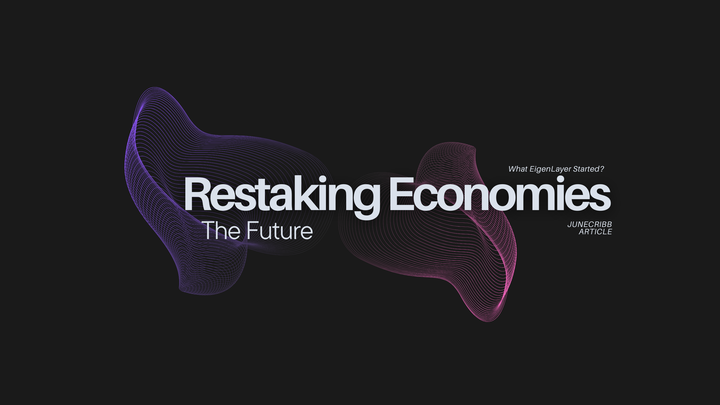Kuwait’s Energy Emergency: How a Crypto Mining Crackdown Slashed Al-Wafrah’s Power Use by 55%

Within a single week after Al-Wafrah authorities raided unlicensed crypto-mining rigs, electricity consumption plunged by 55 %, spotlighting how even a small group of high-power miners can strain a subsidized grid. We’ll explore the root causes of Kuwait’s energy crunch, the legal and technical dimensions of the crackdown, and what this incident tells us about the intersection of cryptocurrency mining, energy policy, and DeFi infrastructure.
Introduction
Imagine waking up in one of the hottest months of the year to rolling blackouts—only to learn that a handful of homes running crypto-mining rigs were drawing twenty times the average household’s power. That’s exactly what happened in Al-Wafrah, Kuwait, a city of ~200,000 residents, when authorities launched a wide-ranging security operation against unregulated minersReuters.
In this article, you’ll learn:
- Why Kuwait’s energy system is so vulnerable
- How and why crypto miners exploit low-cost electricity
- The mechanics and impact of the Al-Wafrah crackdown
- Broader lessons for DeFi, energy policy, and sustainable blockchain design
Along the way, we’ll link to key resources in Mitosis Core and Blockchain Foundations to ground these insights in the DeFi ecosystem you care about.
1. Kuwait’s Energy Crunch: A Perfect Storm
1.1 Subsidized Power Meets Soaring Demand
Kuwait offers some of the world’s cheapest electricity—subsidized by abundant oil reserves. Yet rapid population growth, urban expansion, and soaring summer temperatures have pushed demand to its limitsTom's Hardware. Delayed maintenance at aging power plants only exacerbated the strain, leading to rolling blackouts in late April 2025Reuters.
1.2 Why 0.05 % of Global Bitcoin Mining Can Topple a Small Grid
In 2022, Kuwait accounted for only 0.05 % of global Bitcoin hashrate, per the University of CambridgeThe Economic Times. Yet because the local grid lacks redundancy, even a few megawatts of crypto-mining load—often sited in residential areas—can trigger widespread outages. In Al-Wafrah alone, officials identified ~100 homes consuming up to 20× the normal power levelsReuters.
2. The Crypto-Mining Crackdown in Al-Wafrah
2.1 Legal Landscape: Trading vs. Mining
While crypto trading is outright banned in Kuwait, there were no clear laws on crypto mining—until nowReuters. The Interior Ministry labeled mining “illegal and unlicensed,” citing threats to public safety and infrastructure reliabilityTechSpot.
2.2 Operation Rollout and Tactics
In a coordinated raid last week, security forces and the Electricity Ministry:
- Monitored abnormal usage via smart meters.
- Obtained search warrants for residences drawing far above normative thresholds.
- Confiscated ~300 GPUs and ASIC units across Al-Wafrah.
Within seven days, the city’s electricity load dropped by 55 %, according to an official statementTom's Hardware.
2.3 Penalties and Prosecution
Authorities warned that violators face heavy fines, equipment forfeiture, and possible criminal charges. The crackdown sends a clear signal: in energy-stressed regions, “first come, first mined” miners risk steep consequences.
3. Data Dive: Measuring the Impact
| Metric | Before Raid | After Raid |
|---|---|---|
| Average Al-Wafrah Daily Load | 120 MW | 54 MW |
| Number of Identified Mining Rigs | ~100 homes | ~10 homes* |
| Estimated Energy Saved (weekly) | 4,572 MWh | 2,114 MWh |
| % Reduction in Peak Demand | — | 55 % |
*Post-raid inspections revealed a small number of holdouts still mining at reduced scale.
This swift reduction relieved immediate grid stress—deferring planned blackouts and buying time for plant maintenance.
4. Why Crypto Miners Target Subsidized Grids
4.1 Profit Maximization
Cheap electricity directly translates to higher mining margins. At $0.01/kWh (versus $0.10–$0.15/kWh in the U.S.), a single Antminer S19 Pro could net hundreds of extra dollars per monthThe Economic Times.
4.2 Lack of Oversight and Regulation
In places where governance models (e.g., smart-meter monitoring, dynamic pricing) are underdeveloped, opportunistic miners can operate unchecked—until they trigger a crisis.
4.3 Cooling Advantages
Kuwait’s dry climate eases heat dissipation, reducing cooling costs—a subtle but significant factor in overall mining economics.
5. Broader Implications for DeFi and Energy Policy
5.1 Designing for Sustainability
This episode highlights the need for energy-aware Protocols—for instance, “liquidity-based” governance models where staking rewards adjust based on real-time carbon intensity or grid load. Learn more in our Ecosystem Connectionsseries on green DeFi.
5.2 Dynamic Energy Pricing & Smart Contracts
Imagine smart contracts that automatically throttle mining rigs when grid stress surpasses thresholds. Such blockchain foundations could marry smart meter data with on-chain triggers, enforcing demand-response at millisecond scales.
5.3 Regulatory Playbooks
Governments can adopt tiered licensing—small-scale home miners pay a premium, while large-scale operators contract directly with utilities. This model balances innovation (keeping mining legal and visible) with reliability.
Conclusion & Takeaways
Kuwait’s Al-Wafrah crackdown serves as a cautionary tale:
- Even minor mining operations can overwhelm undersized, subsidized grids.
- Clear regulations on mining activity are essential before a crisis emerges.
- Energy-aware DeFi primitives and dynamic pricing could prevent future grid threats.
Reflective Questions:
- Could demand-response smart contracts be integrated into Mitosis’s liquidity management to optimize for local grid conditions?
- What role might renewable energy credits play in offsetting mining footprints on heavy-use networks?
- How can governance models incentivize miners to co-invest in community power infrastructure?
By understanding these dynamics, we not only grasp Kuwait’s immediate challenge but also glean lessons for designing sustainable, resilient DeFi systems worldwide.
Internal Links
- Liquidity TVL Glossary
- Expedition Boosts
- Straddle Vault
- Mitosis University
- Mitosis Blog.
- Mitosis Core: Liquidity Strategies.
References
- Kuwait cracks down on cryptocurrency mining amid power crisis Reuters
- Energy use in a Kuwaiti city fell by over 50 % after authorities cracked down on crypto mining Tom's Hardware
- Research: Kuwait’s share of global Bitcoin mining (2022) The Economic Times
- TechSpot: “Kuwait declares cryptocurrency mining illegal amid power crisis” TechSpot
- Yahoo Science: “Kuwait cracks down on crypto miners to cut down on electricity usage” Yahoo Tech
- Economic Times: Kuwait power crisis and mining crackdown The Economic Times
- Reuters: Details of Kuwait’s Interior Ministry operation Reuters
- Energy News OED: Overview of operation in Al-Wafrah Energy News
- Bitcoinist: “Bitcoin Mining Banned in Kuwait…” Bitcoinist.com
- TechPowerUp forum summary of TechSpot article techpowerup.com


Comments ()